NASA published a series of images taken by the Chandra X-ray telescope. They show some of the most intriguing deep space objects known to astronomers today.
Center of the Milky Way
The center of our galaxy is located at a distance of about 26 thousand light-years from Earth. Due to the thick dust clouds surrounding it, it is not accessible for observations with optical telescopes. Fortunately, the dust passes other types of radiation, including X-rays, which gives Chandra the opportunity to get the image.
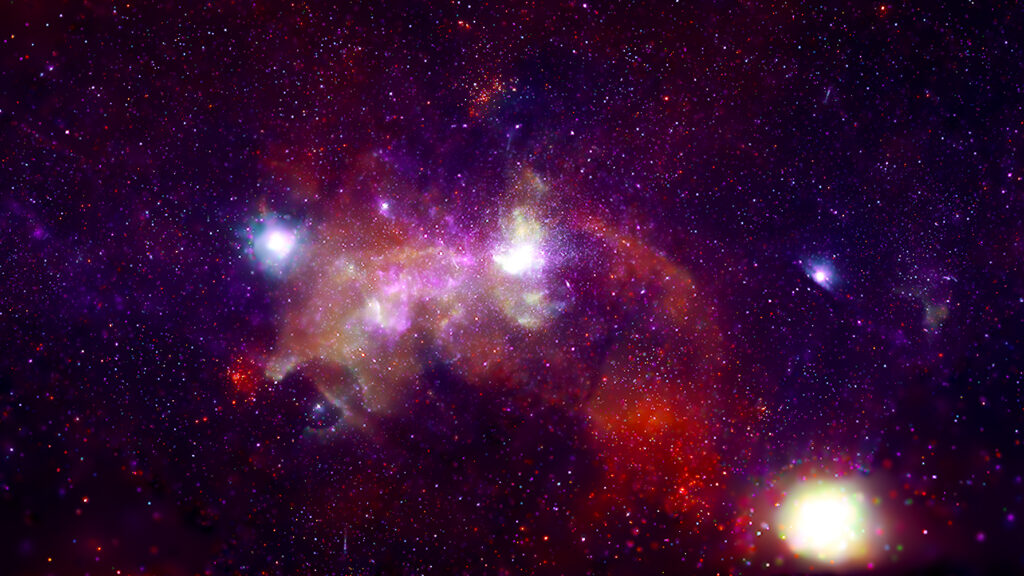
The center of the Milky Way is home to a supermassive black hole, as well as a number of other exotic objects. Among them are gas clouds, massive luminaries, neutron stars and much more.
Kepler’s Supernova Remnant
In 1604, a supernova exploded in the earth’s sky, a great contribution to the study of which was made by the famous astronomer Johannes Kepler. Therefore, it is often called Kepler’s supernova.
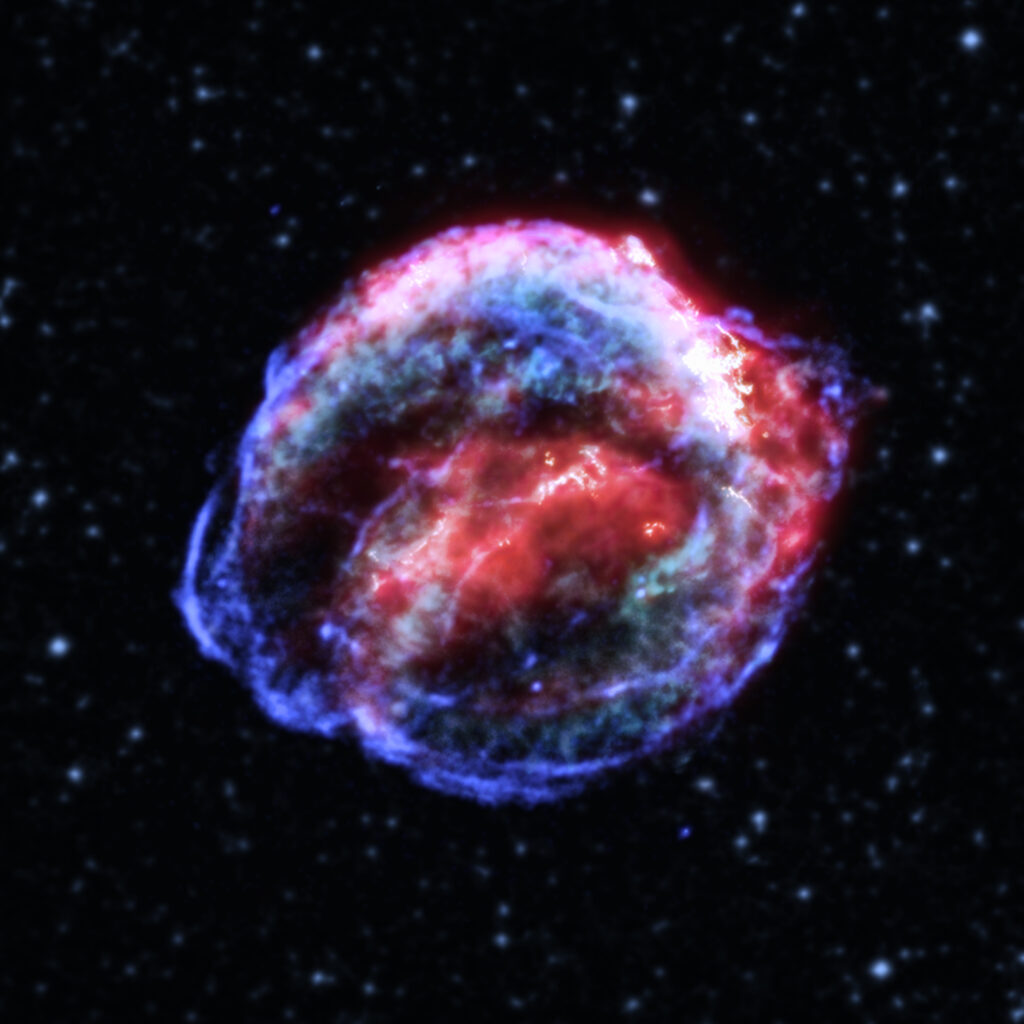
Now we know that the flare occurred at a distance of 20 thousand light-years from Earth. Its source was a white dwarf that absorbed too much matter. Chandra data (blue) shows a powerful shock wave, and infrared data from the Spitzer Space Telescope (red) and optical data from Hubble (blue and yellow) show fragments of a destroyed star.
Tailed Galaxy
The following image shows the galaxy ESO 137-001, which is located at a distance of about 220 million light-years from Earth. It attracted the attention of astronomers thanks to its tail.
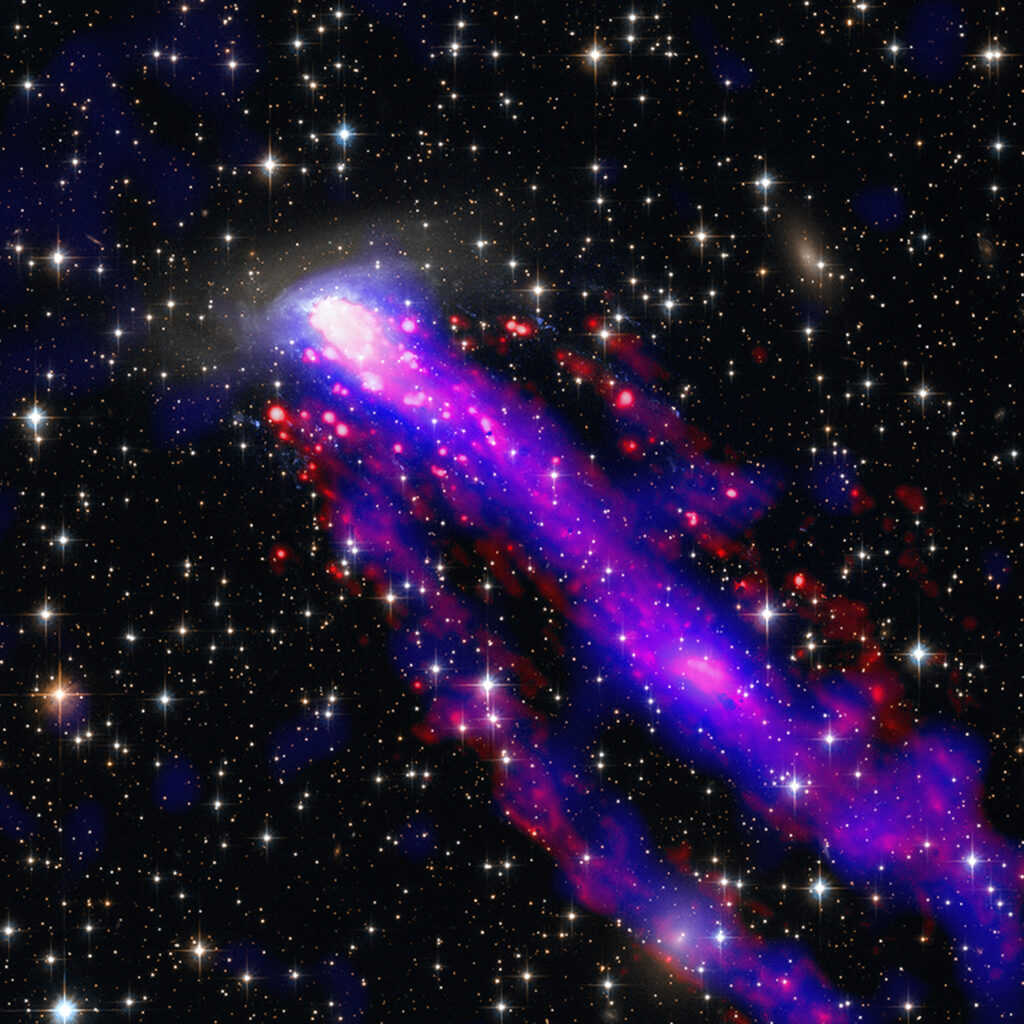
ESO 137-001 is moving in space at a speed of about 670 km/s. In the process of this movement, it encounters intergalactic plasma, which “blows” gas out of it. It heats up to high temperatures and actively emits in the X-ray range (blue color). Data from the ESO’s Very Large Telescope was also added to the image, which recorded the glow of hydrogen atoms (red) and infrared Hubble data (orange and blue).
Voracious Galaxy NGC 1365
You can see the galaxy NGC 1365 in this picture. It is located at a distance of 74 million light-years from Earth.
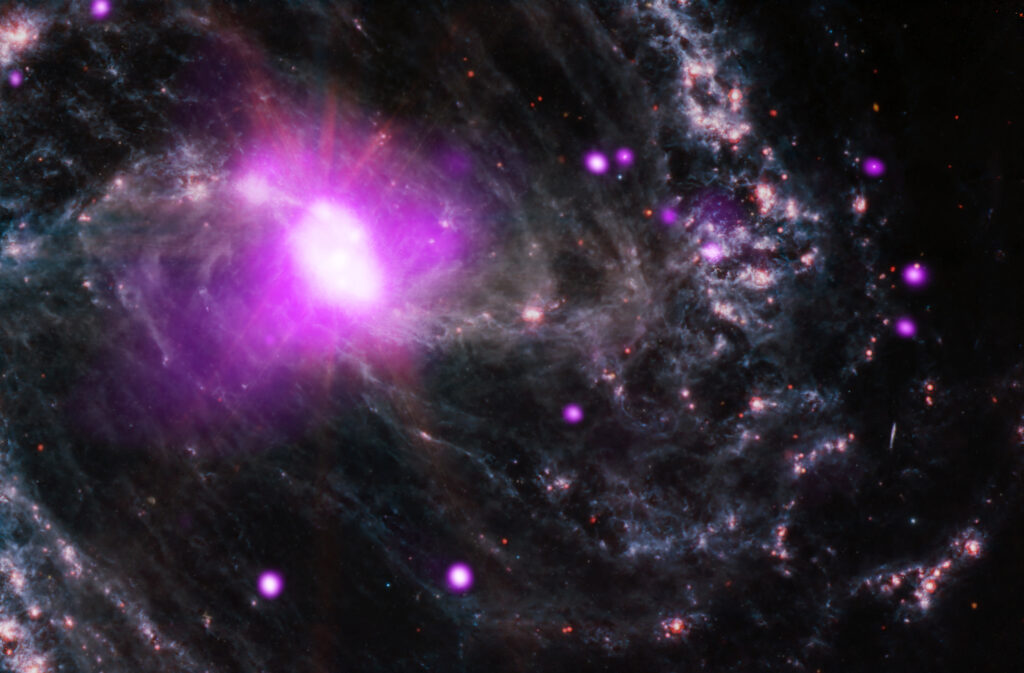
NGC 1365 is known for its large size, as well as the supermassive black hole located in its center, which receives a constant flow of matter. Some of this hot gas will eventually be absorbed by it. The image is a combination of Chandra data (purple) and infrared data from the James Webb Space Telescope (red, green and blue).
Vela Pulsar
Vela Pulsar is located at a distance of 960 light-years from Earth. At one time, it played an important role in the history of astronomy. The pulsar observations carried out in 1968 provided the first direct evidence that neutron stars were formed during supernova explosions.
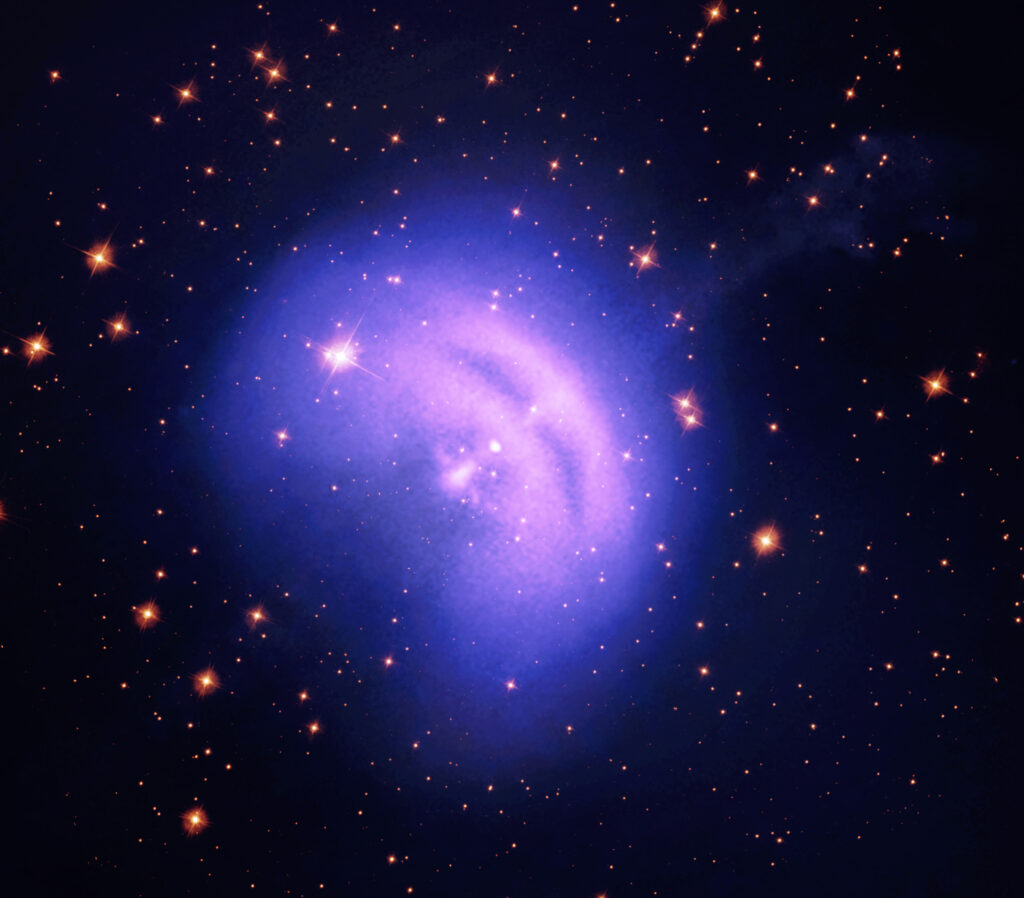
The image shows the consequences of the explosion that led to the formation of a pulsar. It combines data obtained by the IXPE probe (blue color), as well as the Chandra (purple color) and Hubble (yellow color) telescopes.
According to https://www.nasa.gov
Follow us on Twitter to get the most interesting space news in time
https://twitter.com/ust_magazine
